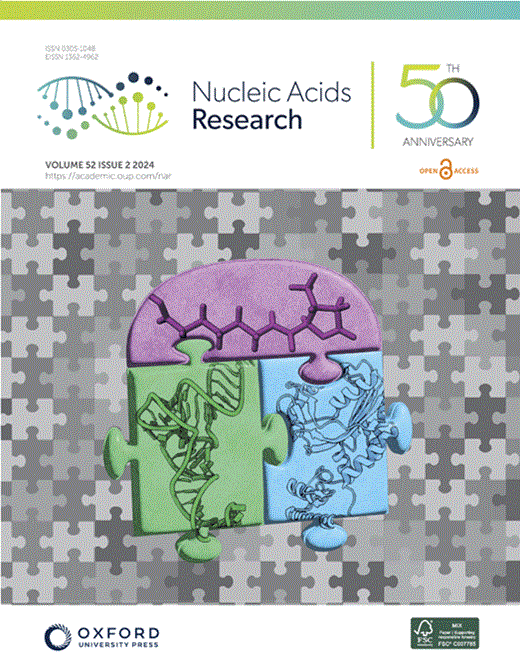Local structural dynamics of Rad51 protomers revealed by cryo-electron microscopy of Rad51-ssDNA filaments
IF 16.6
2区 生物学
Q1 BIOCHEMISTRY & MOLECULAR BIOLOGY
引用次数: 0
Abstract
Homologous recombination (HR) is a high-fidelity repair mechanism for double-strand breaks. Rad51 is the key enzyme that forms filaments on single-stranded DNA (ssDNA) to catalyze homology search and DNA strand exchange in recombinational DNA repair. In this study, we employed single-particle cryogenic electron microscopy (cryo-EM) to ascertain the density map of the wild-type budding yeast Rad51-ssDNA filament bound to ADP-AlF3, achieving a resolution of 2.35 Å without imposing helical symmetry. The model assigned 6 Rad51 protomers, 24 nt of DNA, and 6 bound ADP-AlF3. It shows 6-fold symmetry implying monomeric building blocks, unlike the structure of the Rad51-I345T mutant filament with three-fold symmetry implying dimeric building blocks, for which the structural comparisons provide a satisfying mechanistic explanation. This image analysis enables comprehensive comparisons of individual Rad51 protomers within the filament and reveals local conformational movements of amino acid side chains. Notably, R293 in Loop 1 adopts multiple conformations to facilitate L296 and V331 in separating and twisting the DNA triplets. We also analyzed the crystal structure of Rad51-I345T and the predicted structure of yeast Rad51–K342E using the Rad51–ssDNA structure from this study as a reference.求助全文
约1分钟内获得全文
求助全文
来源期刊

Nucleic Acids Research
生物-生化与分子生物学
CiteScore
27.10
自引率
4.70%
发文量
1057
审稿时长
2 months
期刊介绍:
Nucleic Acids Research (NAR) is a scientific journal that publishes research on various aspects of nucleic acids and proteins involved in nucleic acid metabolism and interactions. It covers areas such as chemistry and synthetic biology, computational biology, gene regulation, chromatin and epigenetics, genome integrity, repair and replication, genomics, molecular biology, nucleic acid enzymes, RNA, and structural biology. The journal also includes a Survey and Summary section for brief reviews. Additionally, each year, the first issue is dedicated to biological databases, and an issue in July focuses on web-based software resources for the biological community. Nucleic Acids Research is indexed by several services including Abstracts on Hygiene and Communicable Diseases, Animal Breeding Abstracts, Agricultural Engineering Abstracts, Agbiotech News and Information, BIOSIS Previews, CAB Abstracts, and EMBASE.
 求助内容:
求助内容: 应助结果提醒方式:
应助结果提醒方式:


